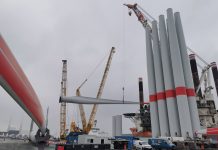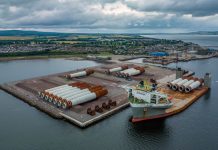Planning law changes proposed by the U.K. government lack measures that aid larger onshore wind projects and national targets are needed to make stakeholders accountable, project partners told Reuters Events.
The U.K. government in December said it would ease restrictions on building onshore wind farms in England after objections by 34 MPs from the ruling Conservative party.
The U.K. operates 15 GW of onshore wind capacity, and development activity has mainly been confined to Scotland since rules in England were toughened by David Cameron’s Conservative government in 2015. Much of Scotland benefits from windier conditions and larger areas of unpopulated land but electricity demand is higher in England.

In a U-turn by Prime Minister Rishi Sunak, the government said it would adapt the National Planning Policy Framework to permit onshore wind development where local consent is demonstrated and any impacts identified by the local community are appropriately addressed. Previous rules meant opposition from one person could block the project, despite government surveys showing 80 percent of the public were in favor of onshore wind farms.
The details of the reforms will be established through a public consultation that will conclude in April and will also seek views on how local communities could benefit from the projects through lower energy bills.
Further reforms are needed to support larger onshore wind projects as the proposed changes are likely to mainly aid smaller, community-scale projects, wind farm developer RWE told Reuters Events.
Turbine supplier Siemens Gamesa welcomed the reforms but called for the government to set national onshore wind targets that include planning milestones. Prior to the reforms, industry group RenewableUK targeted 15 GW of new onshore wind capacity by 2030 but only 1 GW in England.
The government is already reforming planning rules for offshore wind as it looks to quadruple capacity to 50 GW by 2030. “It’s important that planning constraints are part of the progress tracking as they already hinder offshore progress,” a Siemens Gamesa spokesperson said. “We should use our combined and substantial knowledge to improve these lead times.”
More info www.reutersevents.com/renewables/wind







































